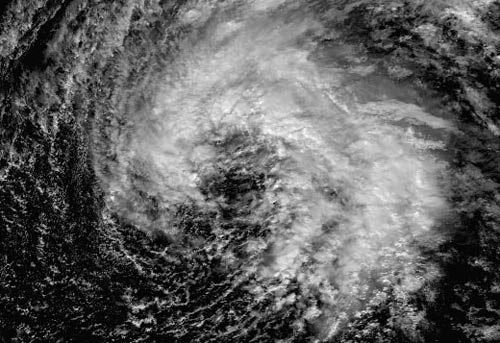Earth's stealth equator
British scientists claim that the atmosphere of the northern and southern hemispheres is separated by a huge chemical band in the western Pacific.
Thanks to a sensor-mounted aircraft capable of detecting chemicals, chemistry experts at the University of York (UK) have found evidence of the existence of a " chemical band" about 50 km wide. in cloudless conditions in the western Pacific Ocean. The concentration of carbon monoxide (CO) in the air is 4 times higher than the northern hemisphere.
This finding will provide more evidence for scientists to increase accuracy in modeling the movement of atmospheric pollutants and assess the impact of pollution on the gas. post.
Scientists believe that industrial development and forest fires make air pollution in the northern hemisphere heavier than the southern hemisphere. According to their judgment, trade winds meet in a cloudy area above the Pacific Ocean (called the tropical wind convergence area) and form a " wall " that separates the atmosphere in two places. bridge. However, York University's findings show that "equatorial chemicals" are located in northern Australia. Thanks to its presence, the air in the two hemispheres does not mix, so that millions of tons of chemicals in the northern hemisphere cannot "invade" the southern hemisphere.

Typhoons push heavily contaminated air masses on the ocean surface, where pollutants can last longer, thereby forming an invisible chemical wall.(Artwork: Wunderground)
According to Dr. Jacqueline Hamilton, the lead researcher, it is very likely that shallow waters in the western Pacific have contributed to the creation of an invisible chemical wall.
" Strong storms often occur in the Western Pacific because surface water in this area is one of the hottest places in the world. Strong storms act as pumps. They push the contaminated air. heavier near the ocean surface, where pollutants have a longer chance of surviving, for decades, pollutants form an invisible chemical wall, "Jacqueline Hamilton. explain.
- What is stealth technology? How does it work?
- America shows off a stealthy flagship bearing the nickname 'ghost'
- Why are the highest mountains in the world near the equator?
- Successfully making stealth material can make the person behind it disappear!
- Decode the 'invisibility' costume worth half a billion
- Robot is planning to stealth aircraft in the United States
- Chinese and Russian stealth aircraft are still much less American F-35 and F-22
- The older generation of nightmares X-47B
- Materials help fight the shape of the chameleon
- India produces stealth fighter
- China's 'cheap' stealth technology can outmaneuver military radar systems
- Discover the power of Russian stealth fighter T-50
 Is the magnetic North Pole shift dangerous to humanity?
Is the magnetic North Pole shift dangerous to humanity? Washington legalizes the recycling of human bodies into fertilizer
Washington legalizes the recycling of human bodies into fertilizer Lightning stone - the mysterious guest
Lightning stone - the mysterious guest Stunned by the mysterious sunset, strange appearance
Stunned by the mysterious sunset, strange appearance